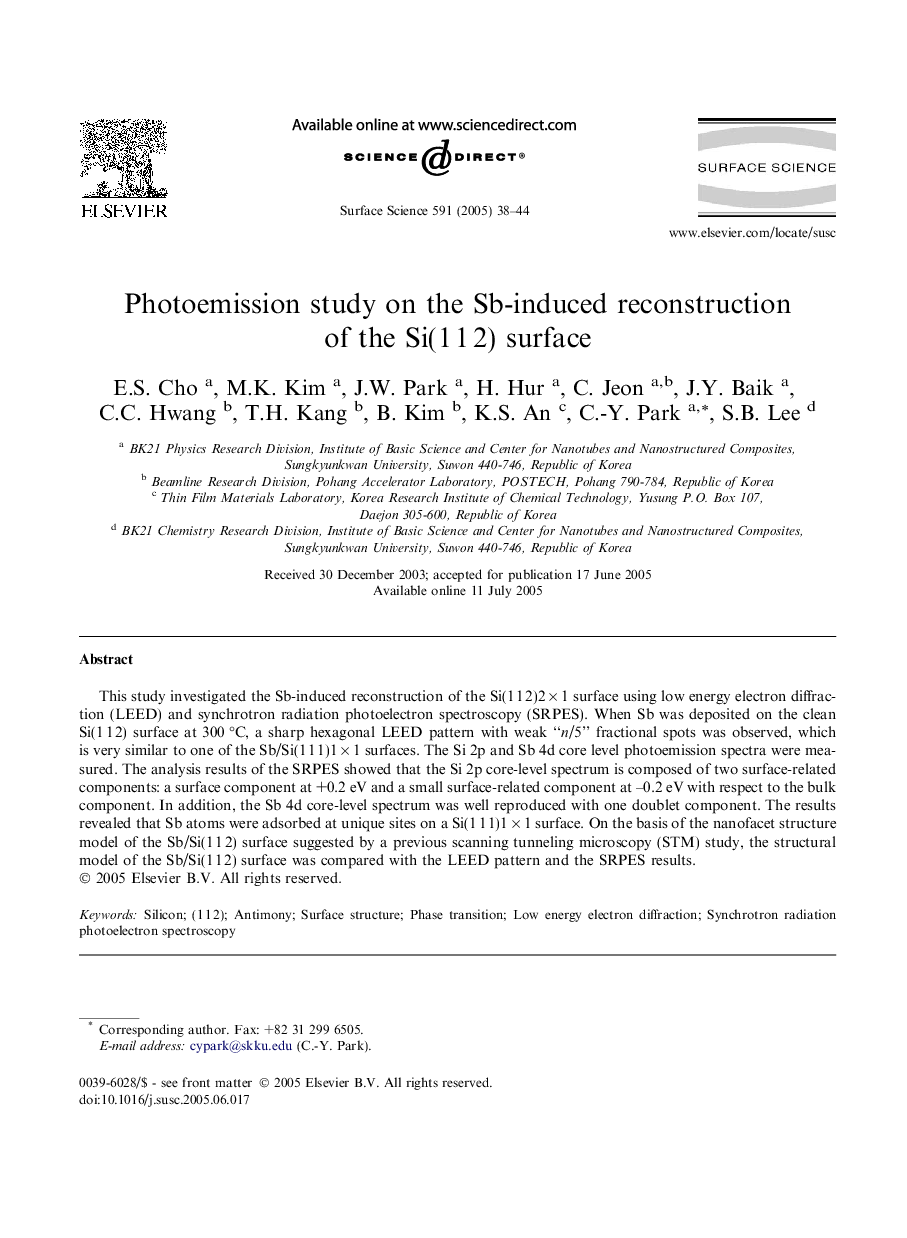| Article ID | Journal | Published Year | Pages | File Type |
|---|---|---|---|---|
| 9594587 | Surface Science | 2005 | 7 Pages |
Abstract
This study investigated the Sb-induced reconstruction of the Si(1 1 2)2 Ã 1 surface using low energy electron diffraction (LEED) and synchrotron radiation photoelectron spectroscopy (SRPES). When Sb was deposited on the clean Si(1 1 2) surface at 300 °C, a sharp hexagonal LEED pattern with weak “n/5” fractional spots was observed, which is very similar to one of the Sb/Si(1 1 1)1 Ã 1 surfaces. The Si 2p and Sb 4d core level photoemission spectra were measured. The analysis results of the SRPES showed that the Si 2p core-level spectrum is composed of two surface-related components: a surface component at +0.2 eV and a small surface-related component at -0.2 eV with respect to the bulk component. In addition, the Sb 4d core-level spectrum was well reproduced with one doublet component. The results revealed that Sb atoms were adsorbed at unique sites on a Si(1 1 1)1 Ã 1 surface. On the basis of the nanofacet structure model of the Sb/Si(1 1 2) surface suggested by a previous scanning tunneling microscopy (STM) study, the structural model of the Sb/Si(1 1 2) surface was compared with the LEED pattern and the SRPES results.
Keywords
Related Topics
Physical Sciences and Engineering
Chemistry
Physical and Theoretical Chemistry
Authors
E.S. Cho, M.K. Kim, J.W. Park, H. Hur, C. Jeon, J.Y. Baik, C.C. Hwang, T.H. Kang, B. Kim, K.S. An, C.-Y. Park, S.B. Lee,
